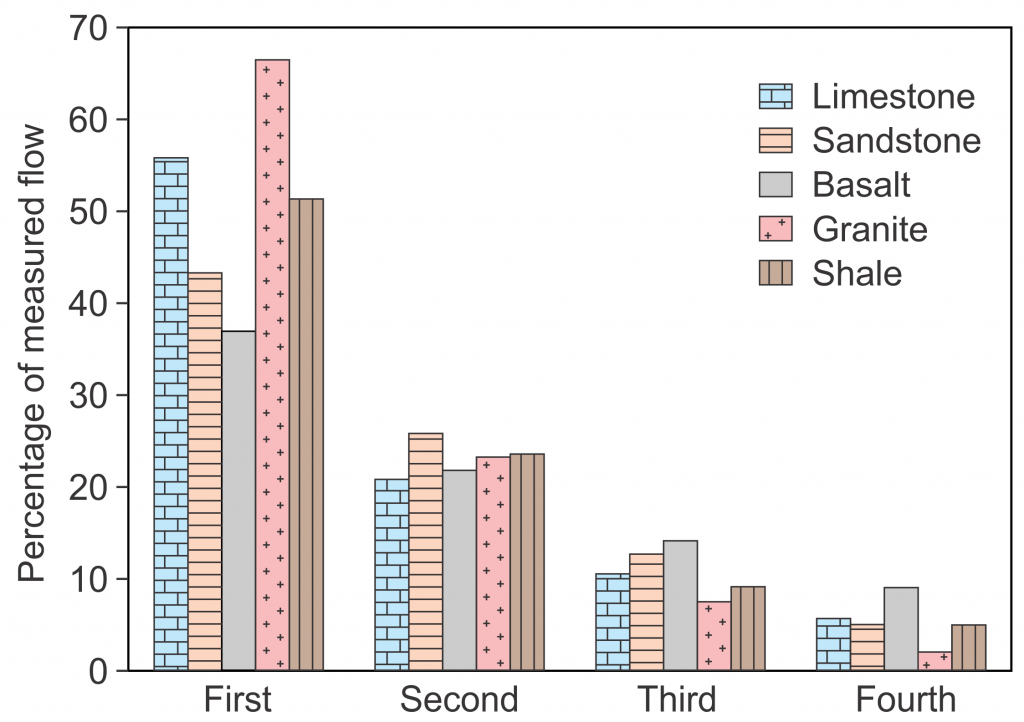
Flowmeters are useful for assessing preferential flow into wells because they can show whether there are major inflows at specific fractures or more distributed flow from the matrix. An analysis of data from 96 bedrock wells showed that 77 wells had all measurable flow just coming from fractures. The remaining 19 wells had intergranular flow, a combination of intergranular and fracture flow, or flow from many closely-spaced fractures. Most wells in all five major lithologies had most flow from just a few fractures (see the figure). Typically, about half the flow came from a single fracture and >90% from the four most-productive fractures. This implies that most flow in bedrock aquifer is commonly through widely-spaced fractures, with apertures >0.3 mm, and groundwater velocities >>10 m/d should be common. This assumption can be tested by measuring groundwater velocities with tracer tests.